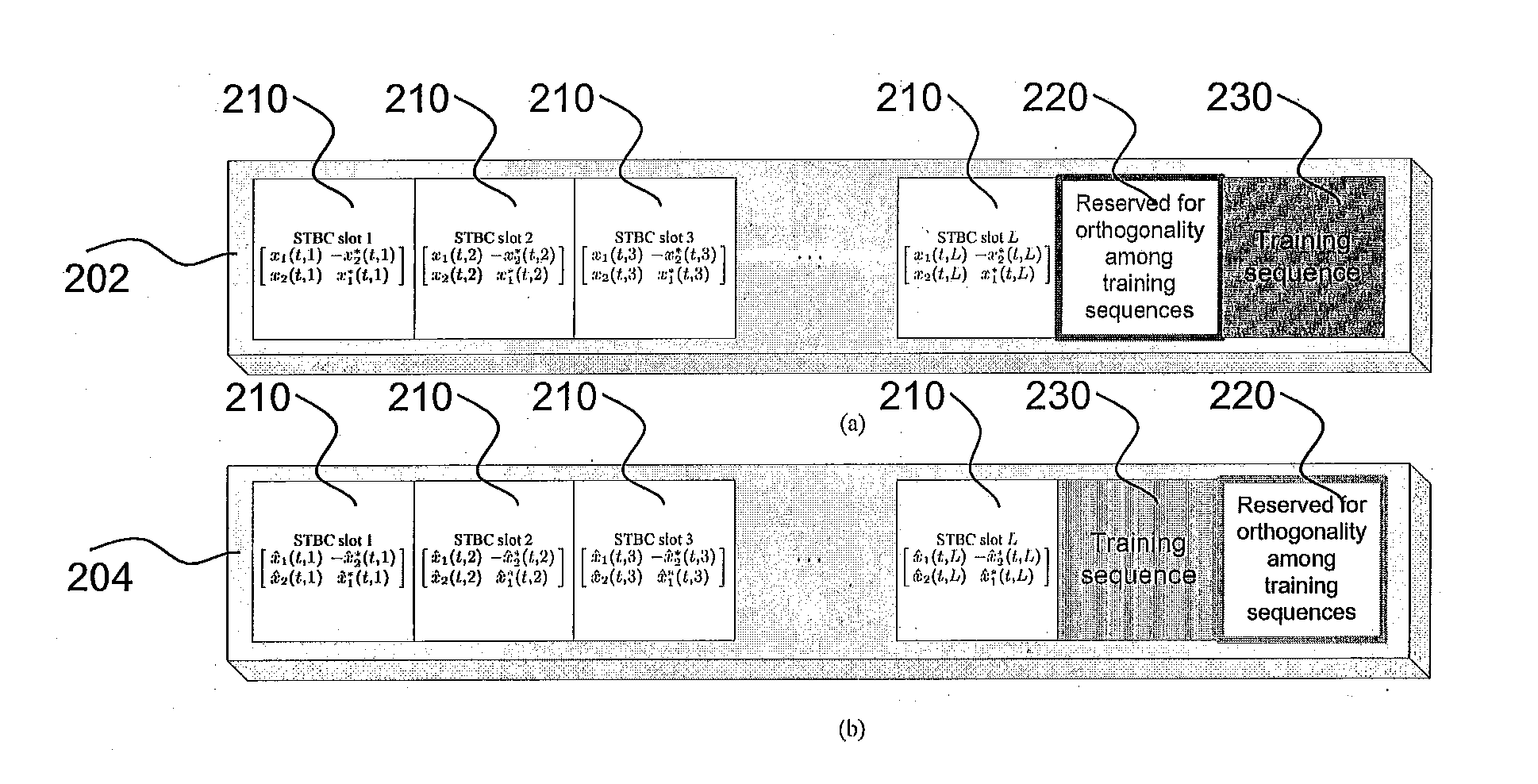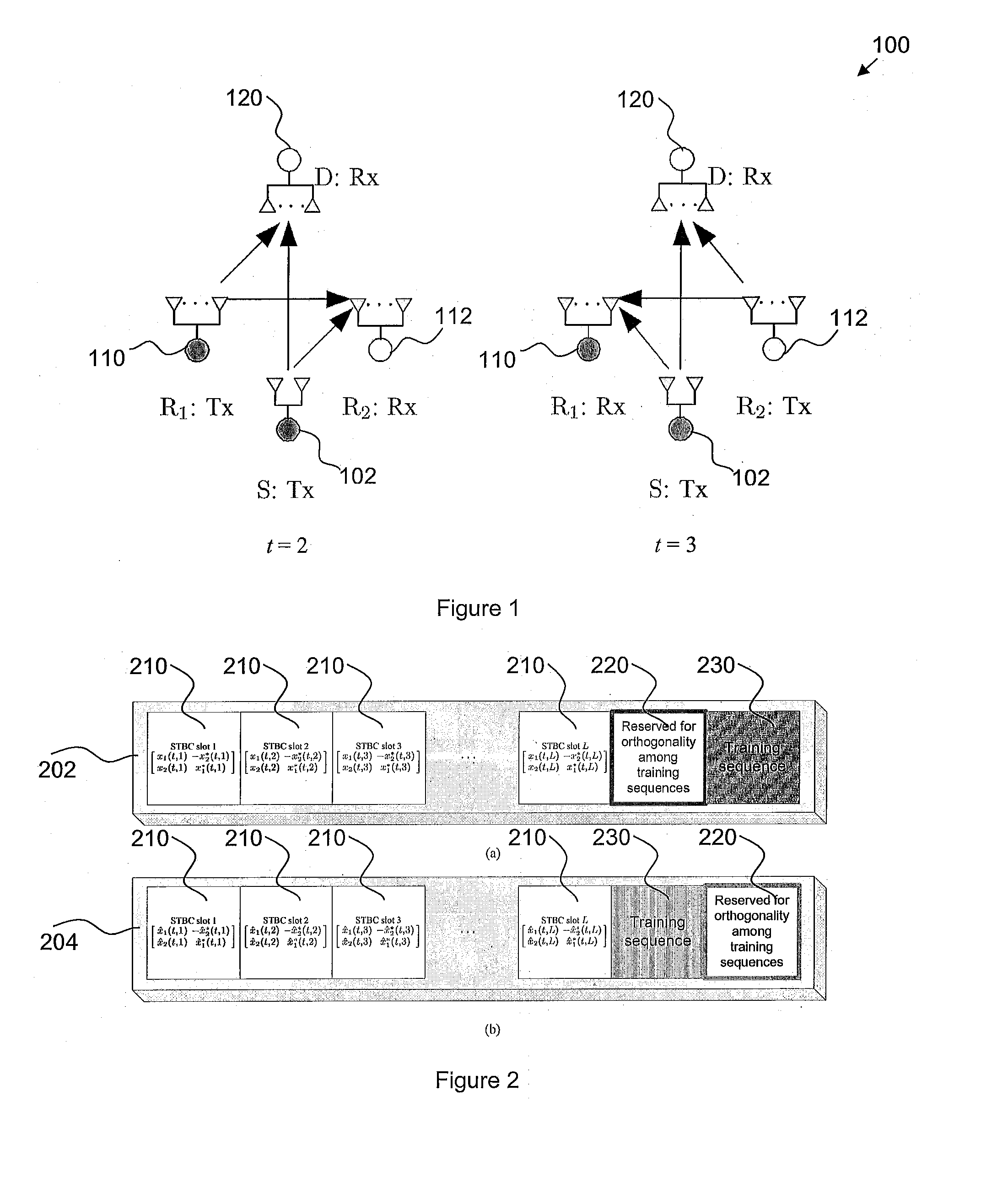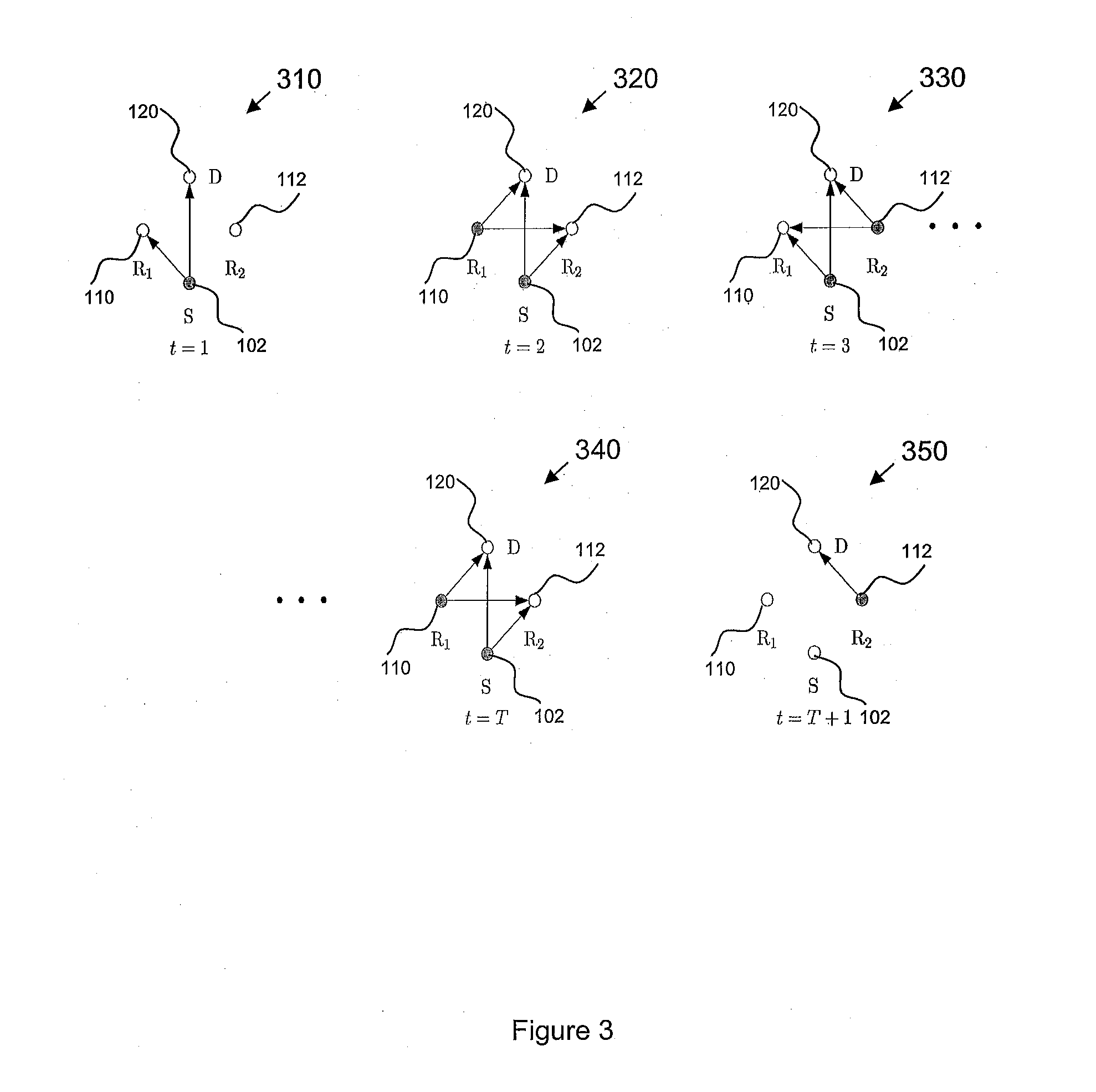Method of communication
a communication method and communication technology, applied in the field of communication methods, can solve the problems of spectral efficiency loss of relaying protocols, restrictions on the transmit power of transmitters, etc., and achieve the effects of reducing inter-cell interference, reducing bit error rate, and reducing co-channel interference (cci)
- Summary
- Abstract
- Description
- Claims
- Application Information
AI Technical Summary
Benefits of technology
Problems solved by technology
Method used
Image
Examples
Embodiment Construction
[0054]The following notations may be used in this specification. For a vector or matrix, the superscripts ‘T’ and ‘*’ respectively denote a transposition and a complex conjugate transposition. For a scalar w, the notation |w| denotes the absolute value of w. For a matrix W, the notation ∥W∥F denotes the Frobenius-norm of W. 0w denotes a w-by-w zero matrix and Iw denotes a w-by-w identity matrix. The notation W1 denotes a matrix inversion of the matrix W. [W]l,l denotes the lth diagonal element of W. E[•] denotes the expectation of a random variable.
[0055]FIG. 1 shows a method 100 of transmission according to the example embodiment. The transmission uses two-path double space-time transmit diversity (DSTTD) and takes place from a source S 102 to a destination D 120 via relay stations R1110 and R2112. The relay stations R1110 and R2112 may relay in a decode-and-forward (DF) manner. In contrast with systems using other forms of relay, e.g. the amplify-and-forward relaying, the usage of...
PUM
 Login to View More
Login to View More Abstract
Description
Claims
Application Information
 Login to View More
Login to View More - R&D
- Intellectual Property
- Life Sciences
- Materials
- Tech Scout
- Unparalleled Data Quality
- Higher Quality Content
- 60% Fewer Hallucinations
Browse by: Latest US Patents, China's latest patents, Technical Efficacy Thesaurus, Application Domain, Technology Topic, Popular Technical Reports.
© 2025 PatSnap. All rights reserved.Legal|Privacy policy|Modern Slavery Act Transparency Statement|Sitemap|About US| Contact US: help@patsnap.com



